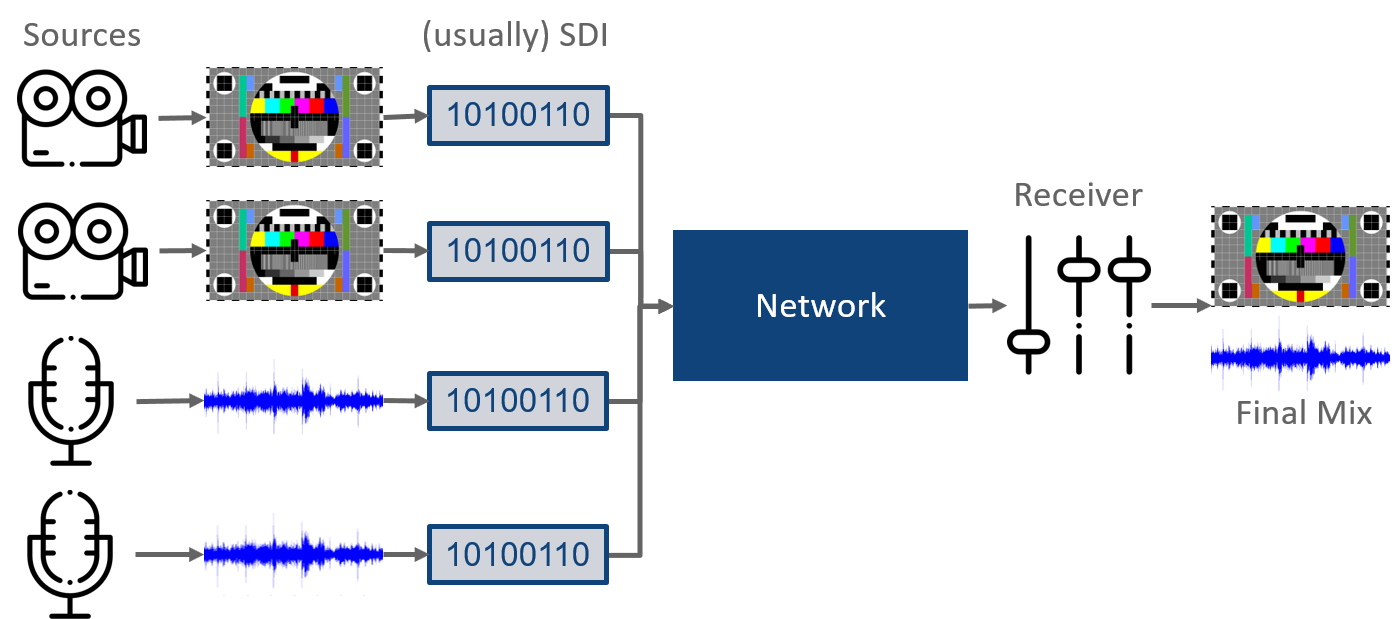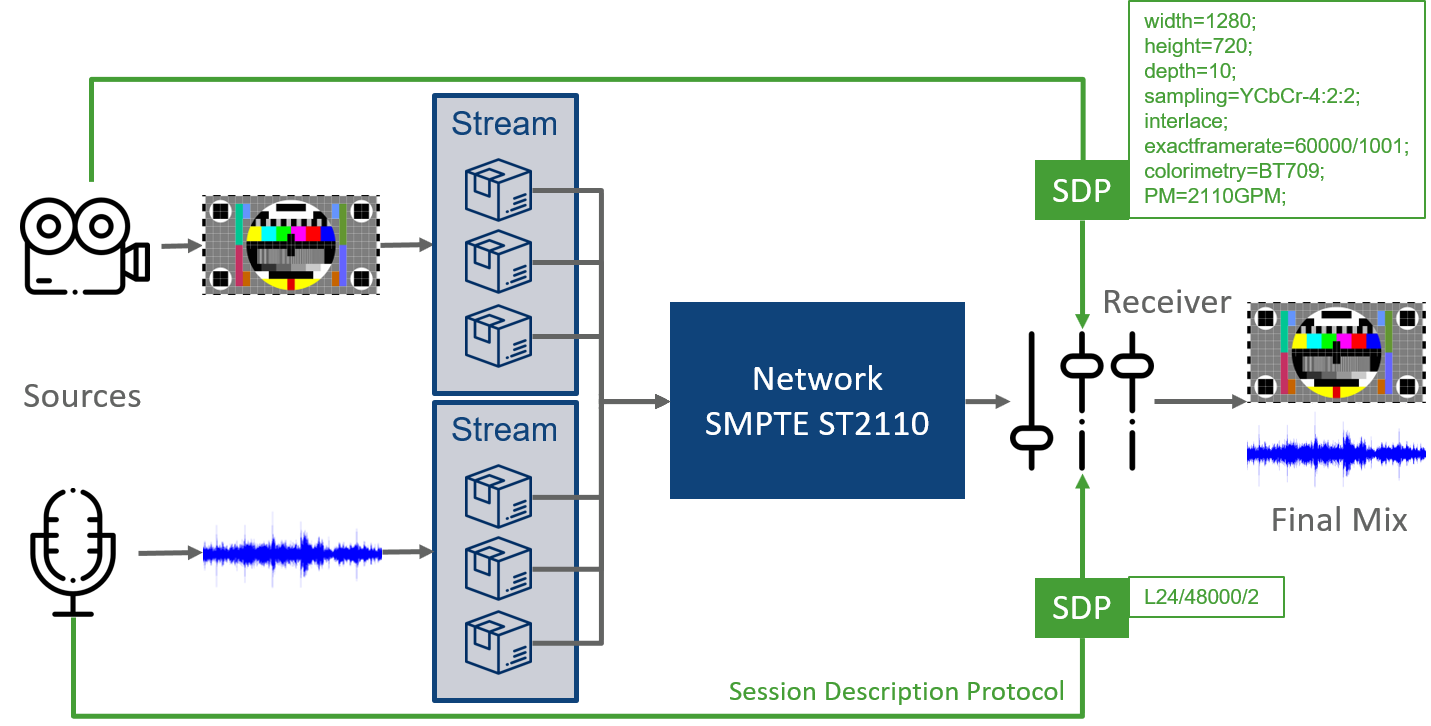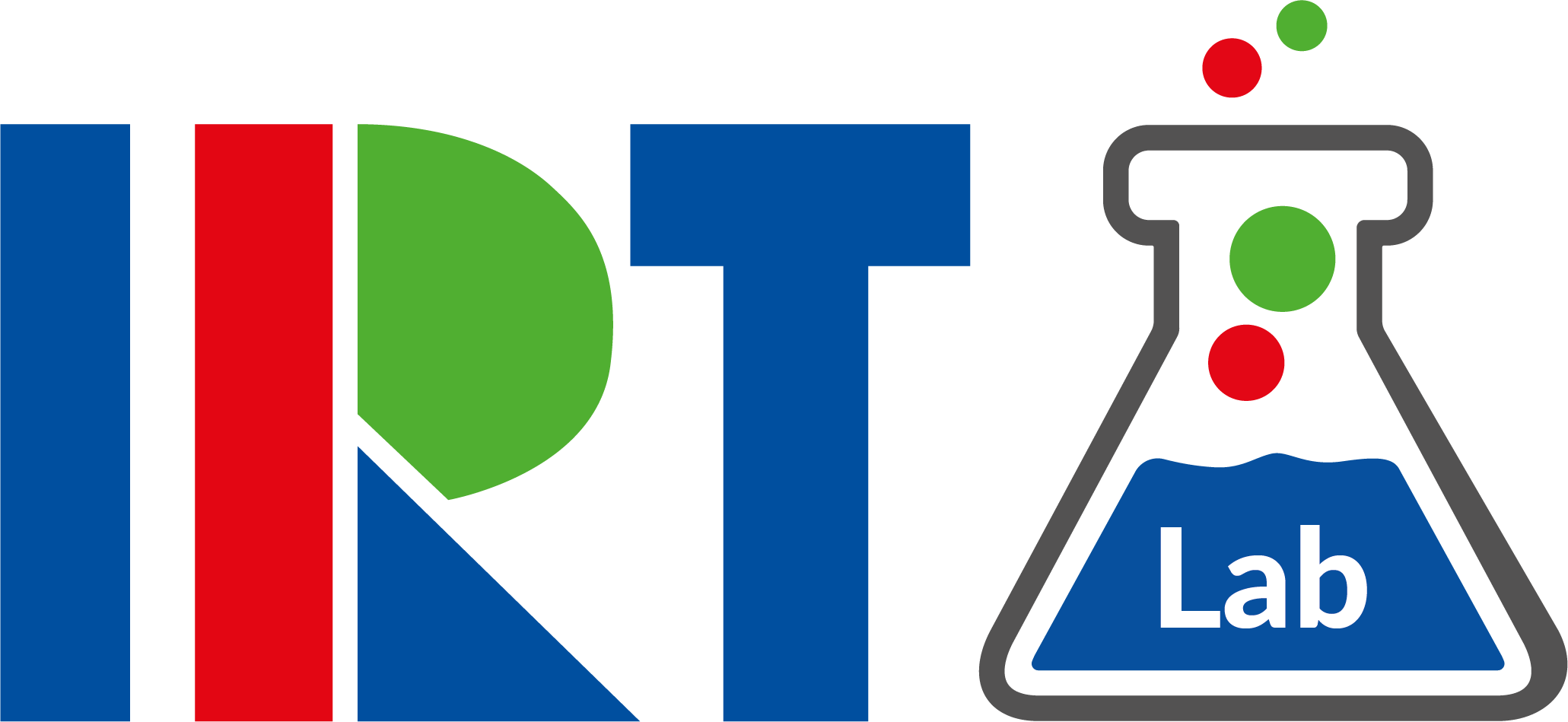At the end of 2017 the ST2110 standard was published by the Society of Motion Picture and Television Engineers (SMPTE). It enables IP-based transmissions of video content in television productions and is intended to replace traditional SDI networks. At IBC 2018 in Amsterdam 39 manufacturers exhibited their first prototypes using this standard. For the analysis and verification of such devices an analysis tool has been developed at the IRT. It inspects the transmitted videosignals with regards to network utilization, format and standard compliance. These uncompressed videosignals generate a large amount of data and are stored in capturefiles, which are analyzed by a client-server system. The system provides detailed error detection when transmitting video content. Results from device testing are relevant to plan a conversion to ST2110 television productions and show that the devices available already implement the standard sufficiently but still do not guarantee error-free use.
Field of Application

television production
In a television production, high-quality video material is produced with a variety of video and audio devices. For this to be achieved efficiently and quickly, all used devices must be connected to each other (see figure televesion production). Therefore, the network has to meet specific requirements that are important in professional television productions. The video and audio signals have to be synchronized and available at all times. For that reason, a reliable transmission has to be ensured for those uncompressed multimedia data streams. The Serial Digital Interface (SDI) has long been the standard for the transmission of uncompressed multimedia data streams, but is limited by point-to-point connections, maximum cable lengths and low transfer rates. A conversion to packet-based IP networking will eliminate these problems and reduce production costs. For this purpose, the transmission protocol SMPTE ST2110 was designed which separates video, audio and ancillary data into single IP streams and sends them unidirectionally to the receiver.
SMPTE ST2110

IP Production SMPTE ST2110
The data from a source is wrapped in an IP packet stream and sent into the network. This stream can be received by multiple receivers and contains only the raw data which reduces network utilization. To interpret the data correctly the receiver has to ask for the Session Description Protocol (SDP) file, which contains important information of the received stream (see figure IP Production SMPTE ST2110). The file includes information about the video format which can be SD up to 4k or multiple audio channels sampled in 16- or 24-bit depth. To confirm the standard compliance of the stream, the IRT ST2110-Analyzer calculates these values from the stream, without using the SDP file. For further verification and error-detection a deeper look into each received IP packet is granted.
Watch the video and learn more how the IRT ST2110-Analyzer works.

